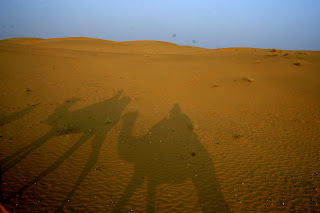
Fuzzy little balls with spindly arms, their actions shine a mirror onto us. At the same time there are some gibbons that are inexplicably hostile and others so sweet you'd think sugar'd be pouring out of their pores. When we first arrived at Highland Farm Sanctuary it was dinnertime and we walked into an American built ranch style house and Janet, our fellow volunteer, was gabbing away as baby gibbons snuggled in her lap. They immediately pulled me in with their buggy eyes - so big you could see the world in them. This was going to be wonderful.
Our days here operated like clockwork: chopping, feeding, cleaning, touching, grooming and bottle feeding all done according to plan - as it must be in a place with one woman running grounds with 45+ gibbons, monkeys, dogs, cats, geese and two foxes. At dinner the volunteers and Pharanee - the Thai woman in her 60's who created all this - come together to discuss the days' triumphs and tragedies, and usually they were as grandiose as all that.
Yet, as always, it's the moments between the routines that alter reality as we know it. Like when six month old LJ finally clung to me for motherly security as I pushed him to grow and play on his own; or when we met Noi, the gentle gibbon who always asks with a little wimper and a point of his finger to have his back touched when we come around, and got to rub his fur and hold his hand just because he wants love.
And forever after these moments, the world is now a place where gibbons tug at my heart and ask me to save them. To stop their habitat from being destroyed, to keep them from being hunted for meat or sold as pets, to keep them from the abuse of the owners who buy them (like the owner of Jerry who kicked him and broke his back, leaving him deformed for life), and to save the air they breathe and the climate they live in. Once I got a look into those big round eyes, I saw the world in them, I knew there would be no going back.
Our days here operated like clockwork: chopping, feeding, cleaning, touching, grooming and bottle feeding all done according to plan - as it must be in a place with one woman running grounds with 45+ gibbons, monkeys, dogs, cats, geese and two foxes. At dinner the volunteers and Pharanee - the Thai woman in her 60's who created all this - come together to discuss the days' triumphs and tragedies, and usually they were as grandiose as all that.
Yet, as always, it's the moments between the routines that alter reality as we know it. Like when six month old LJ finally clung to me for motherly security as I pushed him to grow and play on his own; or when we met Noi, the gentle gibbon who always asks with a little wimper and a point of his finger to have his back touched when we come around, and got to rub his fur and hold his hand just because he wants love.
And forever after these moments, the world is now a place where gibbons tug at my heart and ask me to save them. To stop their habitat from being destroyed, to keep them from being hunted for meat or sold as pets, to keep them from the abuse of the owners who buy them (like the owner of Jerry who kicked him and broke his back, leaving him deformed for life), and to save the air they breathe and the climate they live in. Once I got a look into those big round eyes, I saw the world in them, I knew there would be no going back.





